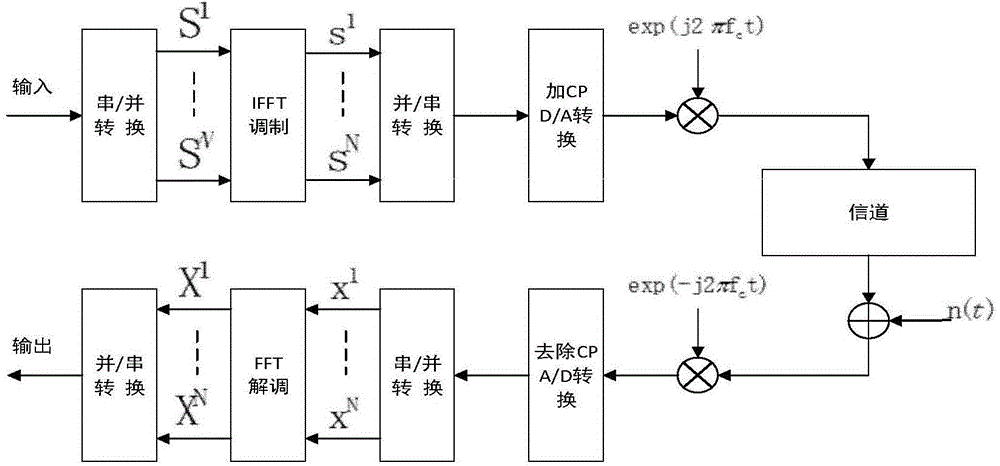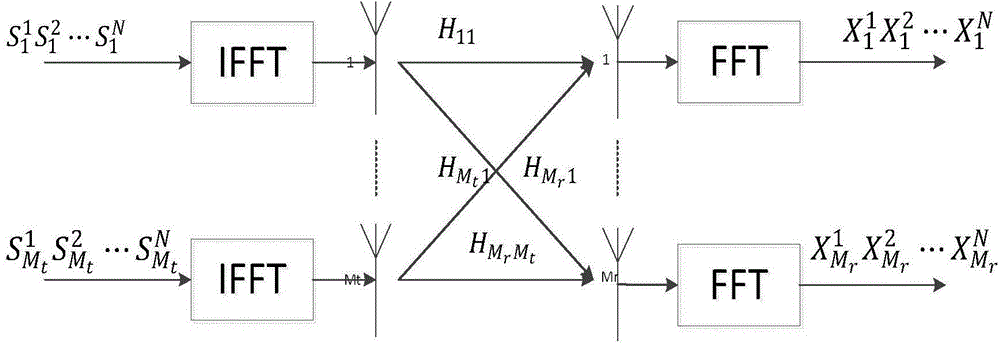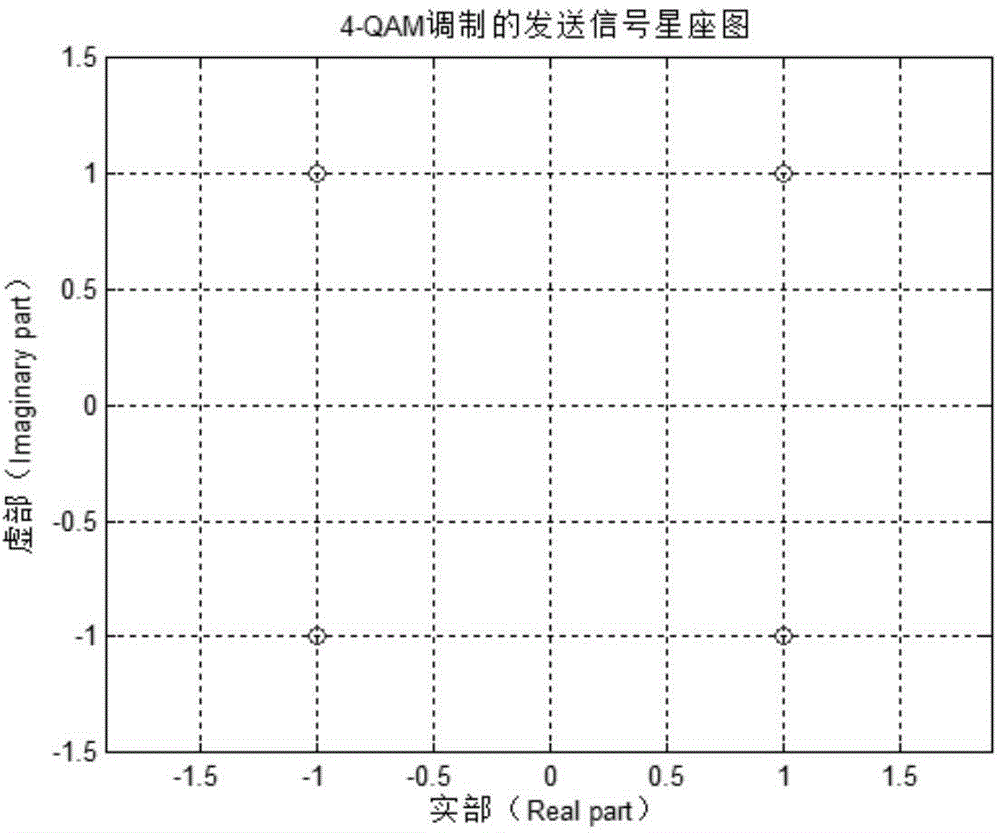MIMO-OFDM (Multiple Input Multiple Output-Orthogonal Frequency Division Multiplexing) signal blind separation method for increasing natural gradient algorithm convergence speed
A technology of MIMO-OFDM and natural gradient algorithm, which is applied in the field of signal blind source separation, can solve problems such as accelerated convergence speed, complex performance, and slow convergence speed, and achieve the effects of increasing convergence speed, great flexibility, and improving separation accuracy
- Summary
- Abstract
- Description
- Claims
- Application Information
AI Technical Summary
Problems solved by technology
Method used
Image
Examples
Embodiment Construction
[0034] The present invention will be described in detail below in conjunction with the accompanying drawings and specific embodiments. On the basis of separating independent component analysis (ICA) theory, the present invention first combines ICA theory to model MIMO-OFDM signals, transforms the blind source separation problem of the system into N independent component analysis problems, and then combines natural gradient theory, The improved natural gradient FlexibleICA algorithm is expounded in detail, and the effectiveness of the algorithm is shown through experimental simulation. It should be understood that these embodiments are only used to illustrate the present invention and are not intended to limit the scope of the present invention. After reading the present invention, those skilled in the art all fall into the appended claims of the present application to the amendments of various equivalent forms of the present invention limited range.
[0035] 1. Signal modelin...
PUM
 Login to View More
Login to View More Abstract
Description
Claims
Application Information
 Login to View More
Login to View More - R&D
- Intellectual Property
- Life Sciences
- Materials
- Tech Scout
- Unparalleled Data Quality
- Higher Quality Content
- 60% Fewer Hallucinations
Browse by: Latest US Patents, China's latest patents, Technical Efficacy Thesaurus, Application Domain, Technology Topic, Popular Technical Reports.
© 2025 PatSnap. All rights reserved.Legal|Privacy policy|Modern Slavery Act Transparency Statement|Sitemap|About US| Contact US: help@patsnap.com



